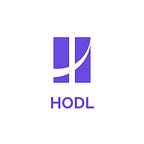Overview
To ultimately encourage investors to HODL (or hold) Bitcoin by providing a less volatile BTC index. BTCH(odl) is a synthetic token that is designed to track the 365 days moving average price of BTC. Long term, BTCH will contribute to building the decentralised monetary system of the crypto world. It is designed to be a crypto native currency (essentially a crypto native stable coin).
What’s BTCH?
BTCH(odl), is a defi protocol that creates an index pegged by a 365 days moving average price of BTC with Rebalancing, Bonding and Staking mechanism. In this artical, we’ll tell you why we need BTCH, how will BTCH work and the genesis stage for investors to join us.
Why BTCH(odl)?
Volatility has always been one of the defining characteristics of cryptocurrency. Bitcoin (BTC) itself has historically produced volatile highs and lows and has been known to vary significantly in price often within very short periods of time.
Regardless of this volatility, it has provided huge returns for investors who have stayed the course and HODL(ed) their coins proving that time eventually eliminates the risk.
Bitcoin ROI vs other assets
Naturally, the wild price fluctuations of BTC has forced investors to reconsider their investment strategies. Many who have ventured into cryptocurrency have washed out during the journey as, Hodl(ing) is harder to achieve than it appears.
The BTCH(odl) Index is designed to be stable and have significantly lower volatility, which is pegged by a 365 days moving average price of BTC and is designed to follow the increasing value of BTC over time. The intent of this effect is to help the investor HODL and, in turn, generate a greater return as a result.
BTCH is stabilised and pegged through the rebalance of a Protocol owned Liquidity pool and is, in part, supported by a Vault of BTC. The protocol will continuously accumulate BTC by selling bond.
The long-term value increase of BTCH is backed by the BTC value increase in the treasury. During price volatility, the value of BTCH may not be 100% backed and to encourage the investor to HODL, staking rewards will be distributed when rebalancing and bond selling.
Key Use case
Short term, to help HODL by providing a less volatile BTC index.
Long term, BTCH will contribute to building the decentralised monetary system of the crypto world. It is designed to be a crypto native currency (essentially a crypto native stable coin).
For example
Assuming a user has been investing in both BTC and BTCH through 2017 to 2018, 10K US$ each quarter. After that, the value of BTC and BTCH (in US$) the user hold is as following chart:
It’s obviously that,
- BTCH has less fluctuation;
- HoDL of BTCH can get the same level of profits comparing to HoDL of BTC.
How it Works?
BTCH Rebalancing, Bonding and Staking
Rebalancing
BTCH, as a less volatile index of BTC, its stability is a key element of protocol design. Price of BTCH is designed to peg 365 days moving average price of BTC (Target Price). The BTCH protocol will establish a Protocol-owned-Liquidity (BTCH/WBTC) through Genesis phase.
In the event of market price of BTCH below Target Price, for example 5% as initial setting, a Buy Rebalance of PoL will be introduced:
1. Withdraw all PoL,
2. Buy BTCH with the withdrawn WBTC to bring price up to Target Price,
3. Resupply remain PoL to liquidity pool,
4. Burn the excess BTCH.
(BTCH is UNDER the target price — see below:)
In the event of market price of BTCH above Target Price, a similar Sell Rebalance will be initiated:
1. Withdraw all PoL,
2. Mint and sell BTCH to bring price down to peg,
3. Resupply remain PoL to liquidity pool,
4. Keep the excess WBTC in protocol Treasury or Mint corresponding BTCH and pair with the excess WBTC, and then grow the Protocol-owned-Liquidity.
(BTCH is OVER the target price — see below:)
Bonding
In order to make Rebalancing most effective, majority of liquidity on the market should be owned by the protocol. Here we introduce Bonding, which allows the protocol trading BTCH for LP share (BTCH/WBTC).
Bond give you the opportunity to buy BTCH from the protocol at a discount. The protocol compensates you with more BTCH than you could get on the market, but your exposure becomes entirely to BTCH and no longer to BTCH/WBTC LP. This helps the protocol accumulate liquidity shares. The demand for bonds decides the discount you get.
OHM’s Bond price vs Token price
Staking
To help Hodl, staking is designed as the dominant strategy for participants. The easy and best strategy to participate is hodl, stake and compound. The BTCH protocol will profit from BTC (hodled by protocol) value increase, protocol treasury income and transaction fee of PoL. Staking is a profit distribution mechanism of the protocol, sometime future profits.
The staking rate of Olympus Dao (A POL protocal with bonding mechanism on ETH)
When a Bond is sold, together with increase of PoL, a certain percentage (20% initially) of additional BTCH will be minted and sent to staking reward pool.
When a Buy Rebalancing occurs, a small percentage (2% initially) of burning BTCH will be exempted and sent to staking reward pool. It will mitigate downward spiral, by encouraging staking with more rewards.
When a Sell Rebalancing occurs, a small percentage (2% initially) BTCH of value of excess WBTC will be minted and sent to staking reward pool, as protocol treasury increases.
Staking rewards will be rebased to staker by each epoch. Staking is how we distribute profits equitably to participants, everyone gets the same percentage profit per epoch. Rebasing also allows to compound yield by just HODL.
